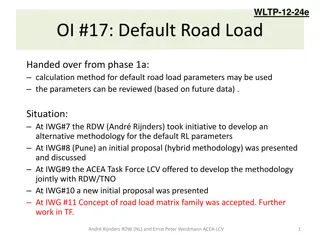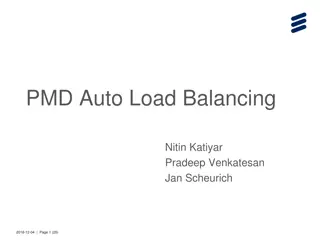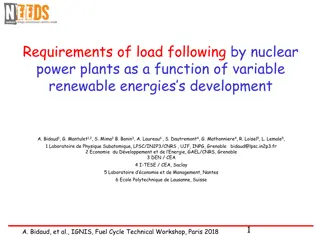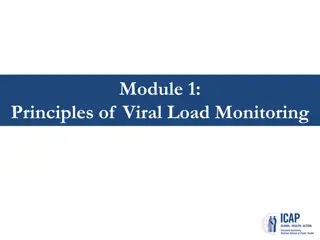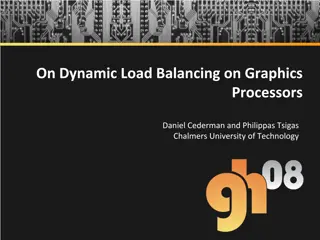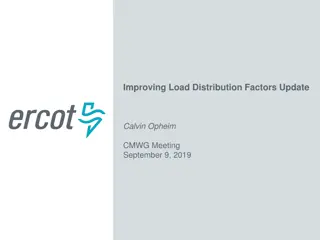
Training Load Principles and Application
Explore the significance of training load in sports training, covering topics such as external and internal load, principles of training load, and the importance of continuity, progression, and recovery in optimizing performance. Understand the interrelation between external and internal load, as well as the principles governing the effective implementation of training load for enhancing athletic capabilities and preventing fatigue. Dive into the meaning of training load, types of load, and key principles to structure effective sports training regimens.
Download Presentation

Please find below an Image/Link to download the presentation.
The content on the website is provided AS IS for your information and personal use only. It may not be sold, licensed, or shared on other websites without obtaining consent from the author. If you encounter any issues during the download, it is possible that the publisher has removed the file from their server.
You are allowed to download the files provided on this website for personal or commercial use, subject to the condition that they are used lawfully. All files are the property of their respective owners.
The content on the website is provided AS IS for your information and personal use only. It may not be sold, licensed, or shared on other websites without obtaining consent from the author.
E N D
Presentation Transcript
SHRI GURU GOBIND SINGH JI GOVT. COLLEGE, PAONTA SAHIB, SIRMOUR (H.P)
B.A. 2nd YEAR COURSE NAME: SPORTS TRAINING COURSE CODE: PED204TH
TRAINING LOAD
TOPICS TO BE COVERED MEANING OF TRAINING LOAD TYPES OF LOAD PRINCIPLES OF TRAINING LOAD PRINCIPLES OF LOAD INTENSITY PRINCIPLES OF LOAD VOLUME
External Load Internal Load (Amount of work done) (Reaction of the organism) Distance run Heart rate Number of jumps Lactic acid concentration in blood Total duration of activity/play Oxygen consumption Symptoms of fatigue. External Load It is the work done by the sportsman. Eg. The distances run by a distance runner. Internal Load It is the psycho-physiological reaction of sportsman to external load. The degree of internal load is judged by pulse rate, lactic acid concentration in blood and various biochemical changes in the tissues. It can also be judged by various symptoms of fatigue. Eg. Sweating, changes in colour, Increase in heart rate etc.. External and internal load are inter-related. For biological adaptations internal load is a must and should be optimum. Since the individuals are differ according to their need the external load must be applied to get optimum internal load.
PRINCIPLES OF TRAINING LOAD 1. Principles of Continuity and Repetition of Load 2. Principles of Optimum Load 3. Principles of Load and Recovery 4. Principles of Specificity of Load 5. Principles of Progression of Load
1.Principles of Continuity and Repetition of Load The load must be given several times to achieve the stable increase in performance capacity and the training should be continuous, otherwise achieved adaptations or performance improvement will be lost after some time.
2.Principles of Optimum Load The load given is neither too low nor too much excessive, because no super compensation takes place or recovery process is slowed down respectively. Therefore, for super compensation and optimum recovery the optimum load must be given. 3.Principles of Load and Recovery Optimum load is essential to achieve good super compensation and the super compensation will take place only if enough time for recovery is given.
4.Principles of Specificity of Load Since specific type of load leads to a super compensation of a particular type of substance, when different performance factors need to be improved different type of load should be given. 5.Principles of Progression of Load The load should be increased from time to time for continuous improvement of performance. According to the need, the lad should be given. For example, higher load should be given for the adaptation to a higher level.
PRINCIPLES OF LOAD INTENSITY The principles of load intensity is sub divided into, Intensity of Stimulus: It refers to the pace of doing work or pace of doing one single movement. Eg. Speed of 100 mts sprint in mts/sec. Density of Stimulus: It is the ratio between the load and recovery of two motor movements. Eg. Rest period between the two 100 mts sprint.
PRINCIPLES OF LOAD VOLUME The principles of load Volume is sub divided into, Duration of Stimulus: It is the time period for which a single motor stimulus acts on the organism. Eg. Total time taken to cover the distance in 100 mts Sprint. Frequency of Stimulus: It is the number of time/repetition a motor stimulus (one set of exercises) is given. Eg. Rest period between the two 100 mts sprint.







